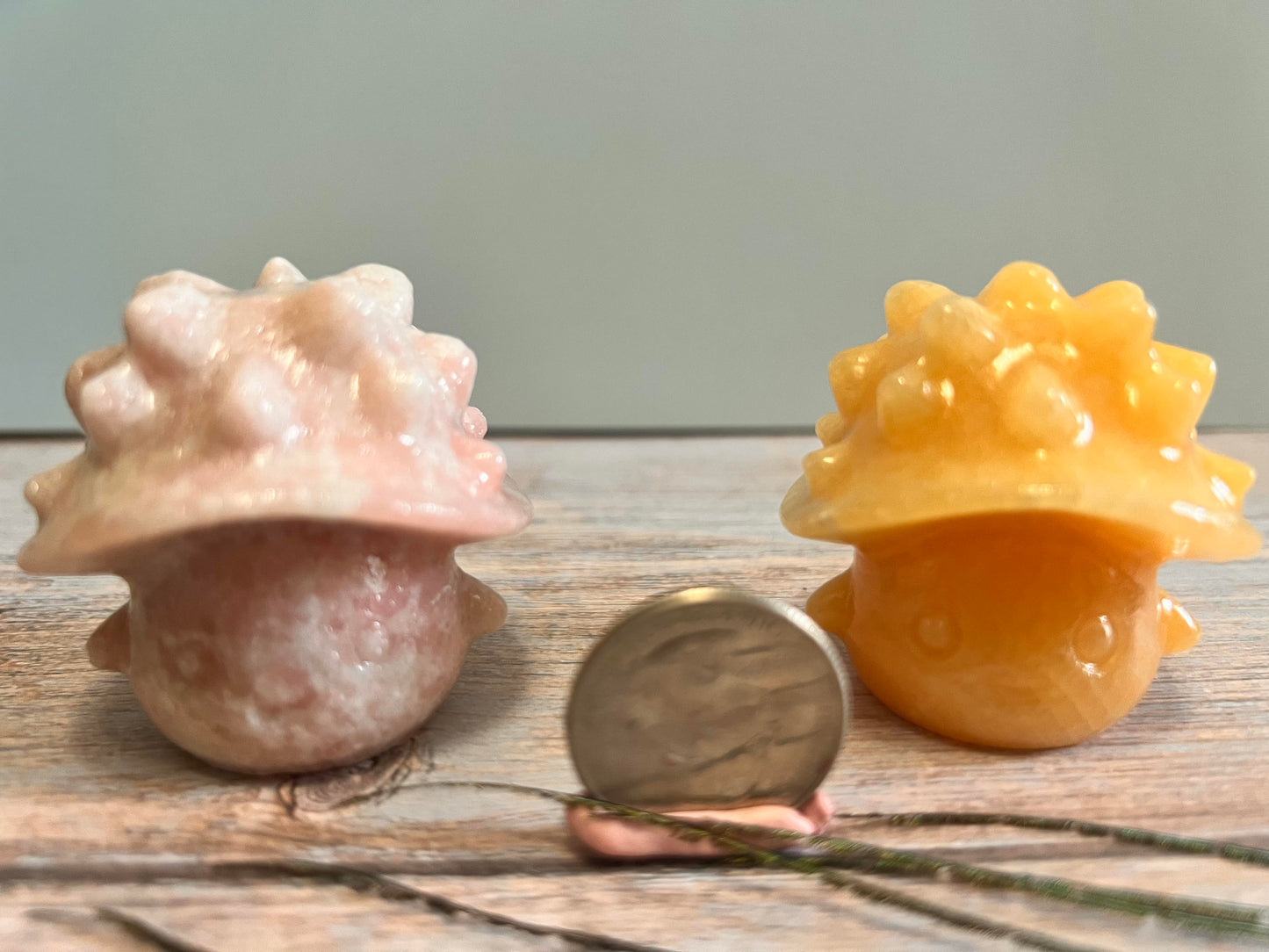Crystal Mushrooms
Crystal Mushrooms
Couldn't load pickup availability
Super cute!
Pink opal is a beautiful gemstone known for its delicate, pale pink color. Here are some key details about pink opal:
-
Composition: Pink opal is a type of common opal (as opposed to precious opal, which exhibits a play of color). It is primarily composed of hydrated silica.
-
Color: The pink color in pink opal can range from a very light, almost white pink to a deeper, more intense pink. This color is due to the presence of organic compounds, including palygorskite.
-
Sources: Major sources of pink opal include Peru, which is particularly well-known for its high-quality pink opal. Other sources include Australia and Mexico.
-
Metaphysical Properties: In crystal healing, pink opal is often associated with emotional healing and tranquility. It is believed to help with stress relief, emotional balance, and compassion.
-
Uses: Pink opal is commonly used in jewelry, such as rings, necklaces, earrings, and bracelets. It is also used for ornamental purposes and in various decorative objects.
-
Care: Opals are relatively soft compared to many other gemstones, with a Mohs hardness of about 5.5 to 6.5. This means they need to be handled with care to avoid scratches and damage. It is also sensitive to rapid changes in temperature and prolonged exposure to water.
Orange calcite is a vibrant and striking variety of calcite, known for its bright orange color and its metaphysical properties. Here are some key details about orange calcite:
Composition
Orange calcite is a carbonate mineral with the chemical formula CaCO₃ (calcium carbonate). It is a member of the calcite family, which is one of the most common minerals on Earth.
Appearance
Orange calcite is characterized by its vivid orange hue, which can range from light, almost pastel orange to deep, rich shades. It often has a translucent to opaque appearance and can display a waxy or glassy luster.
Sources
Major sources of orange calcite include Mexico, Brazil, the United States, and Peru. It is often found in sedimentary rock formations.
Metaphysical Properties
In crystal healing and metaphysical practices, orange calcite is associated with several positive attributes:
- Creativity and Energy: It is believed to boost creativity, motivation, and energy levels, making it an excellent stone for artists and anyone needing a mental boost.
- Emotional Balance: Orange calcite is thought to help with emotional balance and to reduce feelings of fear and anxiety.
- Sacral Chakra: It is commonly associated with the sacral chakra, which is linked to sexuality, pleasure, and emotions.
Uses
Orange calcite is used in various forms, including:
- Jewelry: It is crafted into beads, cabochons, pendants, and rings.
- Decorative Items: Polished stones, carvings, and spheres made from orange calcite are popular decorative pieces.
- Healing Practices: It is used in crystal grids, meditation, and energy healing sessions.
Care
Orange calcite has a Mohs hardness of 3, making it relatively soft and requiring careful handling:
- Cleaning: Clean with warm soapy water and a soft cloth. Avoid using acidic or abrasive cleaners, which can damage the stone.
- Storage: Store separately from harder gemstones to prevent scratches and in a cool, dry place to avoid moisture damage.



